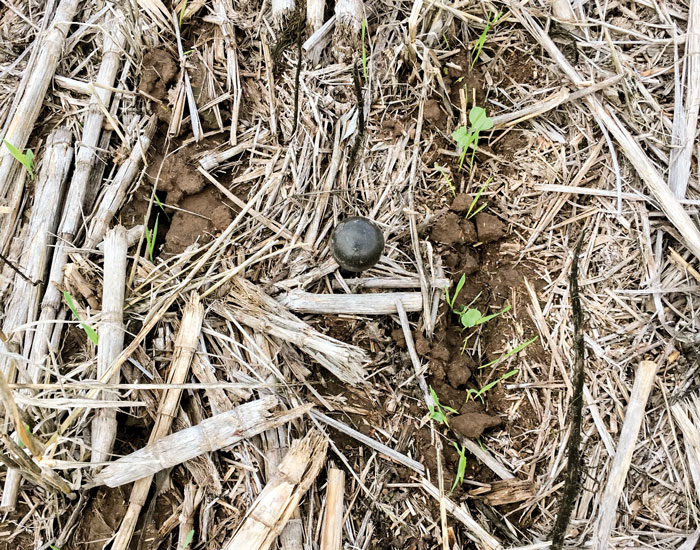No-Till Farmer
Get full access NOW to the most comprehensive, powerful and easy-to-use online resource for no-tillage practices. Just one good idea will pay for your subscription hundreds of times over.

INTERSEEDED COVER. Winter wheat emerging in heavy grain sorghum stubble along with interseeded radishes is a common sight for Lance Feikert and his brother, Kyle, when moisture allows the use of cover crops on their southwestern Kansas farm near Dodge City. Note the fully set 6-foot soil probe in the friable Harney clay-loam.
Farming 25 miles southeast of Dodge City in southwestern Kansas with limited irrigation, long-time no-tiller Lance Feikert says it’s difficult to set a rotation schedule and stick with it because of rainfall variability.
In early May 2022, it had been 220 days since Feikert Farms, which covers 3,500 acres of cropland in Ford and Clark Counties, had received an inch or more of rainfall. Meanwhile, conventional-farming irrigators in the area had already planted corn and soybeans after several field trips, a pre-watering and another water application to break the crust.
As fifth-generation producers on the farm, Feikert and his brother, Kyle, were holding off — waiting for a shower to boost the chances of success on 1,600 acres of dryland grain sorghum (milo) stubble they were planning to drill on fields that haven’t seen a plow or disc for 16 years.
“We got three-tenths of an inch of rain in late April and would like to see an inch or two over a couple of days to give us really good moisture,” Feikert said on May 2, noting weather watching is absolutely necessary when your farm has only a pair of center pivots fed by low-producing irrigation wells.
NAME: Feikert Farms
LOCATION: Bucklin, Kan.
ACRES: 3,500 cropla
YEARS NO-TILLING: 16
CROPS: Grain sorghum, wheat, barley, oats, cover crops
ANNUAL PRECIPITATION: 18 inches (ranges from 8-24 inches)
PRIMARY SOIL TYPE: Harney (clay-loam)
IRRIGATION: Limited water on two center-pivot circles
LIVESTOCK: 110-head commercial cow/calf herd
“I’m a pessimistic optimist,”…